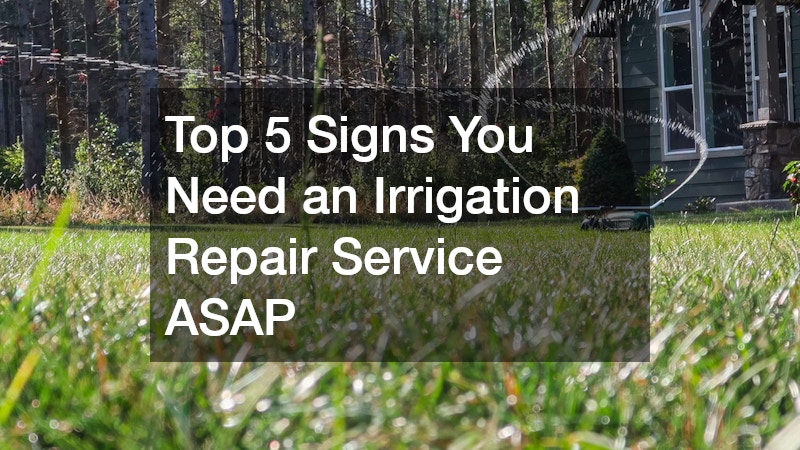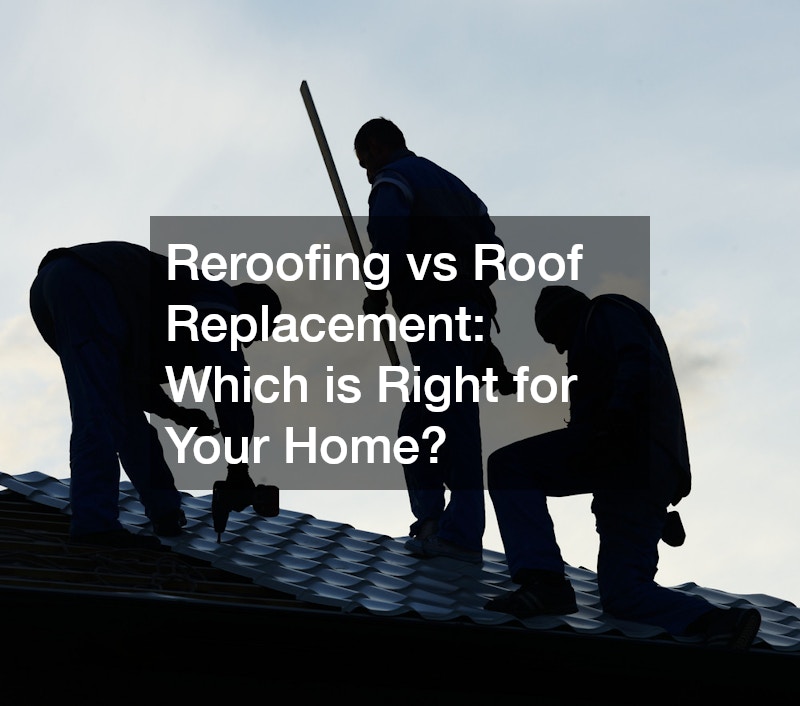
There comes a time when every homeowner has to choose between roof repair and roof replacement. You’ve been enjoying the benefits of a roof over you: protection from the weather elements, good air quality, and a cozy indoor setting all year round. However, your roof can’t hold out forever. Both roof repairs for a leaking garage roof and replacement cost valuable resources, including money, time, and labor. As we’re about to discover, other variables also affect your roofing decisions.
1. Age of Roof
On average, a roof fitted with all the essential layers and installed properly has a lifespan of 30 years. It might seem like a long time, but several things can shorten this timeframe drastically, from irregular roof maintenance to extreme variations in weather. Old roofs are vulnerable to wear and tear, deterioration, and extensive damage from falling debris.
Extreme heat, cold, and precipitation are your roof’s biggest threats. These three elements affect your roof’s structural integrity on a large scale. Over time, repairing your roof will seem like an everyday concern.
When you calculate how much you spend on extensive roof repairs, it makes no sense to retain an old roof. For example, a constantly leaking garage roof indicates an underlying problem with your roofing structure. Given that roof replacements are expensive, a roofing contractor can advise you on ideal roofing repairs to boost your roof’s longevity as you plan. There are also alternative payment solutions. If your roof’s warranty coverage is still in effect, it may cover or lessen the cost of your roof repairs and replacement.
2. Damage to Roof

Over its lifespan, your roof suffers damage caused by exposure to weather elements and their consequential effects. Roof damage comes in different levels and will affect your roofing decisions. Generally, minor damage means minor roof repair, while major damage calls for major repairs or a complete roof replacement. But is it that simple?
Some types of roof damage are clear. Falling debris on your roof in severe storms can cause significant damage. It could be heavy tree branches or objects picked up by high winds. Whichever the case, visible gaps and large dents may need extensive repairs, partial or complete roof replacement in the worst-case scenario.
Some types of roof damage, however, can be subtle. Let’s say you have a leaking garage roof. You’ll possibly conduct minor roof repairs, like sealing up the holes, tears, or cracks, making your roof waterproof, right? But roof leaks could only be part of a developing problem.
Always work with a licensed roofer. They’ll inspect your roof for damages caused by extreme heat, precipitation, or falling debris and conduct proper roof repairs. If extensive roof damage is imminent, a replacement is preferable.
3. Type of Roof
There are plenty of roof designs. Some roof designs, such as the gable roofing style, are built with function as the focal point. Other roofing designs are more aesthetic, like a hip roof design. Meanwhile, flat and shed roofs are suitable for simplicity while serving their intended purpose. However, your roof type ultimately affects the choice between repair and replacement.
Due to the angle of the roof’s pitch, gable roofs are excellent at shedding rainwater off the roof’s surface. A gable roof’s conventional design makes it easier to install roofing material and do a roof repair or replacement. With minimal water damage, you’ll only have to conduct routine roofing maintenance and minor repairs. But only if you’re diligent with roof inspections
Basically, many custom roofing designs on the market today are slight variations of the more established roof designs. So, if you’re going for a hip roof design, seek the professional opinion of a roofing contractor. Hip roofs are complex and present an attractive look for your home. However, it has poor drainage and is suited to areas prone to strong or high winds.
Flat roofs, however, are popular with garage extensions. They have a slight gradient to aid in shedding rainwater. However, steady rains can create pools of water on the surface. If left unchecked, this water could infiltrate the roof and damage your roofing structure. Water stains on your garage ceiling are sure signs of a leaking garage roof. Call your go-to roofing service and have your roof checked.
4. Long Term Plans
What comes to mind when you think of your roof? Is it more than just offering you protection from the weather elements? Thinking long-term is important to ensure your roof’s structural integrity, durability, and longevity.
Let’s start with the most basic need: a roof over you. You must carefully pick your roof design when aiming for strength and stability. Other factors also come into play, such as the type of material for your roofing components, budget, location, and climate. A roofing service can help you here.
A strong, sturdy roof can withstand the harshest weather conditions and remain intact. It can support heavy loads of ice and snow in winter without stressing the roofing components. A well-built roof will also endure extreme heat and wind storms. You’ll cut down on roof repairs and won’t have to deal with a leaking garage roof whenever there’s heavy rain.
5. Energy Efficiency

Another long-term plan to consider when installing your roof is energy efficiency. Your roof keeps your home energy efficient through ventilation and insulation. Let’s examine how these two principles can prevent a leaking garage roof while lowering energy bills.
Roof vents circulate air by removing warm, humid air generated indoors and moving it outside. This aeration effect prevents condensation between roofing components and excessive heat from being trapped in your attic space. What’s more, the air cycle balances out your indoor temperature levels.
Roofing insulation keeps your roof dry and moisture-free and prevents heat loss during the cold months. As a result, you’ll possibly do a few minor roof repairs when you have a well-ventilated and insulated roof. The less heat and precipitation affect your roof, the less you’ll worry about major roofing decisions, like extensive repairs or a replacement.
Alternatively, make your roof heat-and-waterproof and energy-efficient with the right roofing material. Choose metal roofing. Metal roofs have a high reflective potential. They reflect most of the sun’s heat and harmful UV rays while keeping your indoor space cool. Metal roofs can withstand high temperatures and don’t damage easily. When installed properly, there’s minimal chance of a roof leak.
6. Budget

Your budget is always a concern when making a roofing decision. You’d probably ask yourself, ‘Do I have enough cash for roof repairs?’ or ‘Replacing my roof is costly. Will I manage?’ These questions and many others will certainly influence your final decision. But before you make a decisive move, consult a professional roofing company.
Perform a comprehensive roof check. Evaluate the level of damage, if any. Check your roofing structure and determine whether it’s still in good condition. If your roofing structure has sustained damage, consider partially replacing affected layers or a complete roof replacement. Get a roofing estimate for the repairs or replacement project from your roofing company.
Replacing your roof is sometimes a more cost-effective approach in the long run. Wouldn’t replacing a leaking garage roof be better than paying for frequent roof repairs? When you’re forced to consider a roof replacement, you’ve wasted precious money that could’ve been invested properly in replacing your roof.
7. Time
The popular phrase ‘time is money’ is strongly felt when contemplating your roofing decisions. It’s, therefore, important to pick the right time of year when you’re ready for roof repairs or a replacement. You have four seasons: winter, spring, summer, and fall.
Winter immediately raises concerns for any homeowner. It’s the coldest season! Making roof repairs or replacement is the last thing on your mind. You must deal with extreme cold, moisture, ice, and snow, which aren’t ideal for external renovations. The days are also shorter, which means fewer daylight hours and lengthy roofing projects.
In spring, the weather starts getting warm again. It’s assuredly a good time to replace or repair your roof. Roofing services are not too busy, so you can contact your local roofing company for a roof inspection. Although spring has intervals of steady rainfall, you’ll know whether you have a leaking garage roof.
Summer is a preferable time. Nonetheless, it’s not advisable. Hot, humid conditions can affect roofing materials during repairs and installation, making the whole project uncomfortable. There’s also a strong possibility of storms later in the day. Schedule roof repairs and replacement in early summer, when heat and humidity levels are still low and tolerable.
Fall is the most popular time for roof repairs and replacement and the busiest, too. The days are drier, particularly in early fall, which gives roof contractors an easier time. Due to high demand and less availability of roofing services, prices typically increase in the fall. So you must book early.
8. Home Value
Improving a home’s value is exactly why your roofing decisions matter. A quality roof preserves both your home’s interior and exterior. Think about how a roof repair or replacement impacts your property’s value.
Presumably, you’ve been scheduling routine roofing maintenance, and your roof is in good condition. If you’re considering selling your home, you should add protective measures to safeguard your roof further. Discuss possible options with your local roofer.
Check for signs of roof damage. If your roofing structure is intact, you can replace existing roofing components with newer ones made of stronger, more durable materials. Apply a fresh layer of roof coating over your roof’s surface to seal any spaces and protect the newly installed roofing components.
It’s your home’s value we’re talking about, so don’t hesitate to invest. Change your roof’s design and choose an attractive one. You’ll have to alter your entire roofing structure to accommodate your newly installed roof. Still, it will be worth the extra hassle and expense. You can change your roof’s pitch to make your attic space accommodating.
9. Climate
Everywhere you turn, there are worrying climate change reports. Homeowners feel the full impact of these variations of once predictable climates. It’s affecting homes by the day. These adverse effects are evident when choosing to repair or replace your roof. Here’s how it happens.
Ice and snow’s freezing and thawing cycles are more erratic in winter. As temperatures rise in the cold weather, ice and snow layers on rooftops begin to melt. Then, fluctuations in temperature cause ice and snow to freeze once more, but only partially. Ice dams are thus formed, which can cause significant roof damage
There’s also the heavy weight of ice and snow on your roof. Originally, you only had to worry about the two. But it’s now raining more frequently in the winter months. Rainwater adds extra weight to the layers of snow and ice, which exerts a lot of stress on your roofing structure. You’ll likely have a leaking garage roof, wood rot, and mold growth.
Heat and humidity levels are higher than usual in summer. Homeowners with poorly constructed roofs suffer the most. If a room has poor ventilation and insulation, it’s likely to sustain damage from trapping excess heat and moisture. This can lead to costly repairs and a roof replacement. If you live in an area prone to stormy weather and extreme cold, contact a professional roof cleaning service to remove fallen debris and ice and snow layers from your roof.
10. Gutters

Your gutter system is a vital part of your roof. It channels rainwater away from your home. Therefore, any damage to your gutters affects your drainage and home’s building structure and, consequently, your decision in either repairs or a complete roof install.
Inspect your gutter system for signs of damage. If the damage is in one area, make necessary repairs. Check for tears or breaks. Use alcohol to clean the problem areas and coat them with sealant to make them waterproof.
Check for loose, broken, or dented hangers after a storm. Screw the hangers back in place and replace the dented or broken hangers with new ones. These are just some instances when repairs are possible. However, if your gutters have sustained extensive damage, they may not do an effective job of draining rainwater. You’ll have to replace the entire gutter system.
Choosing between roofing repair and replacement is more challenging than it seems. When you account for all the variables influencing your roofing decisions, you realize how nuanced it is. You could do minor DIY repairs, like fixing your leaking garage roof. But you need the help of a qualified roofing expert to know the extent of damage to your roof. So, get one onboard.


